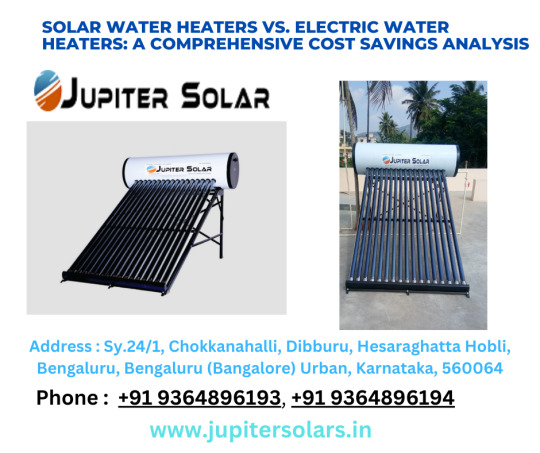#GREENENERGY
Text

Today is such a special day, as our solar panels have gone on and we’re finally able to generate some of our own electricity. It’s been a long time coming, but at last we can tick this stage off the list.
Happy and grateful … 🥹👍
#scotland#lifestyle#outdoors#adventure#handmade#family#travel#homesteading#craft#countrylife#countryliving#countrygirl#summer#project#solar panels#solar system#solar energy#solar power#self sufficient living#rurallife#greenenergy#greenliving#happy#grateful#homesteader#good vibes#goodday#home improvement#sustainability#offgrid
21 notes
·
View notes
Text
Ronald Stein - destroyed the entire renewable energy agenda in just 60 seconds.
Ronald advocates that energy literacy starts with conversations and the knowledge that renewable energy is only intermittent electricity generated from unreliable breezes and sunshine. He argues that wind turbines and solar panels cannot manufacture anything for humanity, while fossil fuels manufacture everything for the 8 billion on this earth.
#Ronald Stein#Energy#Truth#Renewableenergy#stuff#like minded people#greenenergy#cleanenergy#energyefficiency#ecofriendly#solarenergy
12 notes
·
View notes
Text

#nature#nature photography#photography#travel photography#landscape#simple living#countryside#farming#farm#wind farm#mountain range#greenenergy#slow living#explore#feel good#wanderlust#travel destinations#calming#soothing#relaxing#sightseeing#agriculture
15 notes
·
View notes
Photo

The claim, which has the backing of institutional investors with over 12 million shares in the company, is said to be the first case in the world seeking to hold a board of directors liable for failure to properly prepare for the energy transition. Environmental law firm ClientEarth, in its capacity as a shareholder, filed the lawsuit against the British oil major’s board at the high court of England and Wales.
It alleges 11 members of Shell’s board are mismanaging climate risk, breaching company law by failing to implement an energy transition strategy that aligns with the landmark 2015 Paris Agreement. “The shift to a low-carbon economy is not just inevitable, it’s already happening. Yet the Board is persisting with a transition strategy that is fundamentally flawed, leaving the company seriously exposed to the risks that climate change poses to Shell’s future success — despite the Board’s legal duty to manage those risks,” Paul Benson, senior lawyer at ClientEarth, said in a statement. Source: CNBC (link in bio) #renewables #future #greenenergy https://www.instagram.com/p/CqdIkQBreV2/?igshid=NGJjMDIxMWI=
92 notes
·
View notes
Text

Charting a path to a sustainable future! 🌍 The Middle East leads in renewable energy investments, combating climate change head-on. Read more about the region's commitment to clean energy
8 notes
·
View notes
Text
#SolarEnergy#RenewableEnergy#GoSolar#CleanEnergy#SolarPower#Sustainability#GreenEnergy#SolarPanel#EnergyEfficiency#SolarInstallation#SaveEnergy#SolarPanels#SolarPV#ClimateAction#SolarSystem#SolarSolutions#SolarElectric#CleanTech#SolarInnovation#HomeSolar
2 notes
·
View notes
Text
Solar Water Heaters vs. Electric Water Heaters: A Comprehensive Cost Savings Analysis
When considering options for heating water in your home, solar water heaters and traditional electric water heaters present distinct advantages and disadvantages, particularly in terms of cost savings. This detailed comparison will explore various aspects of both systems, helping you make an informed decision.
Initial Investment
The initial investment for a solar water heater is generally higher than that of an electric water heater. Solar systems typically range from ₹18,000 to ₹60,000 or more, depending on factors such as capacity, type, and additional features. While this upfront cost may seem daunting, it’s essential to consider the long-term benefits and savings.
In contrast, electric water heaters usually have a lower initial price point, with basic models starting around ₹6,000. This affordability makes them an attractive option for many homeowners looking for immediate solutions without a significant financial commitment.
Overview of Jupiter Solar Water Heaters
Jupiter Solar is a prominent brand in the solar water heater market, particularly known for its efficient and sustainable solutions. Their products harness solar energy to provide hot water, making them an environmentally friendly alternative to traditional electric water heaters. Below is a detailed overview of the features, benefits, and types of solar water heaters offered by Jupiter Solar.
Call +91 9364896193, +91 9364896194 to order solar heaters
Solar Water Heaters vs. Electric Water Heaters
Key Features of Jupiter Solar Water Heaters
Energy Efficiency: Jupiter Solar water heaters utilize advanced technology to maximize solar energy absorption, ensuring high efficiency and reduced energy costs.
Durable Construction: These heaters are designed with robust materials, including corrosion-resistant tanks and high-quality solar collectors, which enhance their longevity and performance.
Variety of Models: Jupiter Solar offers a range of models to cater to different household needs, including options suitable for hard water areas and varying capacities.

Energy Expenses
One of the most significant advantages of solar water heaters is their reliance on renewable solar energy. This means that once installed, the cost of heating water can be drastically reduced, as sunlight is free and abundant. Homeowners can expect to save anywhere from 50% to 80% on their monthly water heating bills. This substantial reduction in energy costs can lead to significant savings over time.
On the other hand, electric water heaters depend on grid electricity, which can fluctuate in price due to various factors, including demand and fuel costs. As electricity prices rise, the operating expenses associated with electric water heaters can become a considerable burden on household budgets.
Return on Investment
The payback period for solar water heaters is often favorable, typically ranging from three to five years. After this period, homeowners can enjoy nearly free hot water for the lifespan of the system, which can last for 15 years or more with proper maintenance. This long-term financial benefit makes solar water heaters an appealing investment for those looking to reduce their overall energy costs.
In contrast, electric water heaters do not provide the same level of long-term savings. While they may be cheaper to install initially, the ongoing energy costs can accumulate quickly, leading to higher overall expenses over time.
Environmental Considerations
Solar water heaters are an environmentally friendly choice, harnessing the power of the sun to heat water without emitting greenhouse gases. This renewable energy source contributes to a reduction in your carbon footprint, making it an excellent option for eco-conscious consumers.
Electric water heaters, however, often rely on electricity generated from fossil fuels, which can contribute to pollution and climate change. By choosing a solar water heater, homeowners can play a part in promoting sustainability and reducing reliance on non-renewable energy sources.
Maintenance Requirements
In terms of maintenance, solar water heaters generally have lower upkeep costs. With fewer moving parts and a simple design, these systems require minimal maintenance to operate efficiently. Regular checks and occasional cleaning of the solar panels are typically sufficient to ensure optimal performance.
Electric water heaters, however, may require more frequent maintenance and repairs, particularly as they age. This can lead to additional costs that can diminish the overall savings associated with using electric systems.
Conclusion
In summary, while solar water heaters necessitate a higher initial investment, they offer substantial long-term cost savings, environmental benefits, and lower maintenance requirements compared to traditional electric water heaters. The decision between these two options ultimately depends on your financial situation, energy needs, and commitment to sustainability. By carefully weighing these factors, you can select the water heating solution that best aligns with your values and goals.
#solar water heater#solar energy#bangalore#india#solar#solar water heaters#bengaluru#solar water heating#solar heater#water#electric heater#SolarWaterHeaters#ElectricWaterHeaters#CostSavings#RenewableEnergy#EnergyEfficiency#SustainableLiving#EcoFriendly#GreenEnergy#WaterHeating#SolarEnergy#ElectricitySavings#HomeImprovement#EnergyConservation#CarbonFootprint#GovernmentIncentives#LongTermSavings#ElectricGeysers#HotWaterSolutions#SustainableHomes
2 notes
·
View notes
Text
☀️ Power Up Your Future with Mits Solar!
Ready to ditch the high electricity bills and embrace clean energy? ♻️ Mits Construction makes going solar easy! Our high-performance panels ☀️ can save you money and reduce your carbon footprint. See how it works in this quick video!
#SolarPower#RenewableEnergy#SustainableLiving#SaveMoneySaveThePlanet#GoSolar#GreenEnergy#EcoFriendly#CleanEnergy#SustainableFuture#HomeImprovement#InvestInYourHome#gogreen#savemoney#energyindependence#solarenergyindia#delhisolar#noidasolar#MITS
2 notes
·
View notes
Text
Dear Battery User,
Do you want to discover how to:
Easily Bring Old Batteries Back To Life Again
Save Thousands Of Dollars On The Cost Of Batteries Over Your Lifetime
Recondition Old Batteries & Resell Them For Big Profits
Increase The Lifespan Of New & Old Batteries
...Well now you can!
https://c8ke.com/tips4yourlifee_F2k
#1.#DIYbatteries#2.#homerecording#batteryhacks#4.#sustainableliving#5.#energyefficient#6.#recyclebatteries#7.#homeprojects#8.#greenenergy#9.#batterylife#10.#savetheplanet#BatteryRevival#SaveMoneyOnBatteries#3.#BatteryReconditioning#ProfitFromOldBatteries#BatteryLifespanExtension#RenewYourBatteries#BatteryRestoration#EcoFriendlyBatteries#BatteryResellOpportunity#ReviveDeadBatteries
2 notes
·
View notes
Text



Well it’s taken us 20 years, but we’ve finally taken the plunge and the solar panels are going on. With the cost of living going crazy, it really forced our hand and we decided it was time to start thinking about disconnecting from the grid … scary, but exciting at the same time. First stage solar panels with battery back up, then looking at generators and a few other options. 🤔
#scotland#lifestyle#outdoors#adventure#handmade#family#travel#homesteading#craft#countrylife#countryliving#countrygirl#solar power#solar energy#solar system#offgrid#homesteader#greenenergy#renewableenergy#solar panels#big changes#self sufficiency#self sufficient living#homesteadlife#rurallife#rural#project#newbeginnings#summer#good vibes
4 notes
·
View notes
Text
#solarpanel#solarenergy#solar#solarpower#solarpanels#renewableenergy#solarsystem#greenenergy#cleanenergy#solarpowered#energy#solarpv#solarinstallation#renewables#renewable#environment#inverter#sun#sustainableenergy#energiasolar#electricity
2 notes
·
View notes
Text
Green Energy: Its Need
#NeedToKnow: Green energy
“Alternative energy generator windmills“/ CC0 1.0
Green energy refers to renewable and environmental friendly sources of power, such as solar, wind, hydro, and geothermal energy, which have lower environmental impacts compared to traditional fossil fuels. These sources play a crucial in mitigating climate change and reducing dependence on non-renewable resources.
Geothermal energy
Photo by…

View On WordPress
2 notes
·
View notes
Text
Wind Farms: Harvesting Energy on a Grand Scale
Wind farms represent the vanguard of renewable energy, showcasing how the forces of nature can be harnessed on a grand scale to power our cities, industries, and homes. These sprawling complexes of towering turbines are becoming an increasingly common sight across vast tracts of land and coastal areas around the world, symbolizing the shift towards sustainable energy production.
The Composition of Wind Farms
A wind farm is an assemblage of multiple wind turbines in a single location used for the production of electric power. A large wind farm may consist of several hundred individual wind turbines, and they cover an extended area of hundreds of square miles. The land between the turbines may be used for agricultural or other purposes. For instance, the Gansu Wind Farm in China stretches over 7,965 square miles, an area larger than some countries.
Site Selection: A Crucial Step
The placement of a wind farm is a meticulous process that involves consideration of wind patterns, environmental impact, and proximity to the grid. Optimal sites are usually in areas with steady, strong winds averaging at least 14 miles per hour. According to the Department of Energy (DOE), wind farms on the U.S. coasts and Great Lakes could generate more than twice the amount of electricity used by the entire country. Coastal areas have the advantage of offshore wind farms which can utilize stronger ocean winds and have less visual impact on the community.
The Technology Behind Wind Farms
Wind turbines in these farms are equipped with state-of-the-art technology to maximize efficiency and minimize downtime. Turbines are now smarter, with sensors and automated systems that adjust blade rotation and orientation to the wind for optimal energy capture. Many have a capacity of 2-3 MW each, with some of the largest offshore turbines boasting a capacity of up to 12 MW. The DOE states that a 2 MW wind turbine can supply electricity to over 500 homes.
The Economics of Wind Energy
Wind farms are economically compelling as well. The cost of wind-generated electricity has plummeted over the past decade, with the International Renewable Energy Agency (IRENA) reporting that onshore wind power is now among the cheapest sources of electricity in many parts of the world. Wind farm projects also create jobs, both in construction and maintenance; the Global Wind Energy Council (GWEC) reported that the sector employed 1.2 million people worldwide as of 2021.
Impact on the Grid and Energy Markets
Wind farms play a significant role in grid stability and energy markets. As intermittent sources, they are often backed by energy storage systems or integrated into a larger grid infrastructure that can balance supply and demand. Innovative solutions like battery storage or interconnections with other renewable sources are being developed to mitigate wind’s variability. Market-wise, the increased wind energy supply is driving down electricity costs and fostering competition among energy sources.
Environmental and Societal Considerations
While wind farms are a boon to renewable energy, they are not without their challenges. Concerns over wildlife, especially birds and bats, and noise pollution for nearby residents are significant issues that require careful planning and mitigation strategies. Nevertheless, the environmental impact is substantially lower compared to fossil fuel-based power generation. Wind farms also contribute positively to the local communities through land lease payments and increased tax revenues used for schools, roads, and healthcare services.
Looking Forward: The Evolution of Wind Energy
The future of wind farms is intertwined with advancements in technology and energy policy. Continued research in aerodynamics, materials science, and turbine design is poised to make wind energy even more efficient and less expensive. The International Energy Agency (IEA) projects that by 2040, wind and solar will power more than a third of the world, with wind energy being a significant contributor. Wind farms are not just about generating electricity; they are about reshaping our energy landscape, fostering sustainable development, and creating a blueprint for future energy solutions.
#windenergy#windgeneration#windfarms#renewableenergy#sustainability#greenenergy#cleanenergy#environment#electricity
3 notes
·
View notes
Text

4 notes
·
View notes
Text

Solar installation at home and panel removal and reinstallations
Solar Installation at Home
1. Assess Your Energy Needs
Calculate your household’s energy consumption to determine the size of the solar system you'll need. Check your utility bills to see your average monthly and annual energy usage.
2. Evaluate Your Home’s Solar Potential
Consider factors such as roof orientation, tilt, shading, and available space. An installer will typically perform a site assessment to determine if your home is suitable for solar panels.
3. Choose the Right Solar System
Grid-Tied Systems: These are connected to the local utility grid and are the most common. They allow you to use grid power when solar production is low and can potentially earn credits through net metering.
Off-Grid Systems: Ideal for remote locations, these systems are not connected to the utility grid and require battery storage.
Hybrid Systems: Combine elements of both grid-tied and off-grid systems, with battery storage to provide backup power.
4. Select a Reputable Installer
Research and compare solar installation companies. Look for certifications, customer reviews, and warranties. Get multiple quotes and ask for detailed proposals.
5. Permits and Approvals
Obtain necessary permits and approvals from local authorities and your utility company. Your installer usually handles this, but it's good to be aware of the requirements.
6. Installation
The installation process typically involves mounting the panels on your roof, wiring them to an inverter, and connecting the system to your home’s electrical system. It usually takes one to three days.
7. Inspection and Activation
After installation, your system will need to be inspected by local authorities and your utility company. Once approved, your system can be activated.
Panel Removal and Reinstallation
1. Reasons for Removal
You might need to remove panels for roof repairs, upgrades, or relocation. Ensure that the removal process is done carefully to avoid damage.
2. Hire Professionals
Removing and reinstalling solar panels should be handled by professionals. They have the expertise to safely disconnect, handle, and reinstall the panels.
3. Roof and System Inspection
Before reinstallation, inspect the roof for any damage and ensure that it’s structurally sound. Also, check the solar system components to ensure they are in good condition.
4. Reinstallation Process
Reinstallation involves re-mounting the panels, reconnecting the wiring, and ensuring the system is properly calibrated and functional.
5. Testing and Activation
Once reinstalled, the system should be tested to ensure everything is working correctly. This includes checking the inverter, connections, and overall performance.
6. Documentation and Updates
Update any system documentation and inform your utility company of the changes, if necessary. This helps ensure your system continues to operate efficiently and in compliance with any agreements.
Additional Tips
Maintenance: Regularly clean your panels and check for any issues. Most systems require minimal maintenance, but it's important to stay on top of it to ensure optimal performance.
Warranty: Keep track of your system’s warranty coverage. Most solar panels come with a 25-year warranty, but other components may have different durations.
Energy Monitoring: Consider installing an energy monitoring system to keep track of your solar energy production and consumption.
If you have specific questions or need more detailed advice, feel free to ask!
#SolarEnergy#RenewableEnergy#GoSolar#CleanEnergy#SolarPower#Sustainability#GreenEnergy#SolarPanel#EnergyEfficiency#SolarInstallation#SaveEnergy#SolarPanels#SolarPV#ClimateAction#SolarSystem#SolarSolutions#SolarElectric#CleanTech#SolarInnovation#HomeSolar
2 notes
·
View notes


